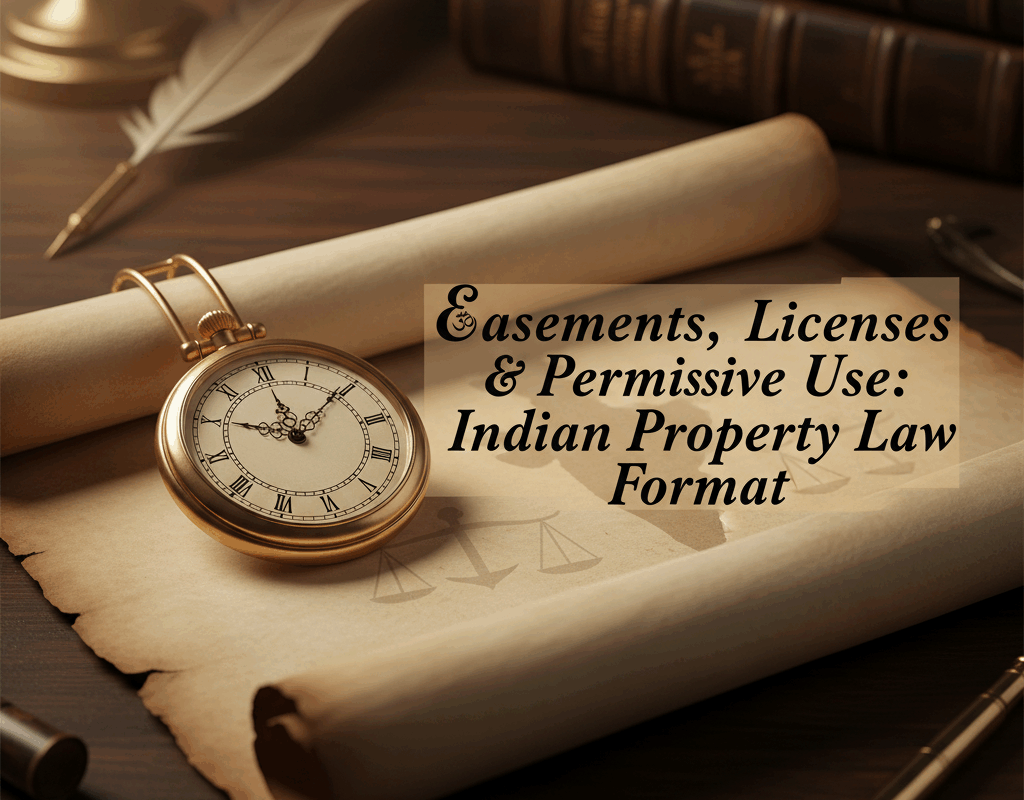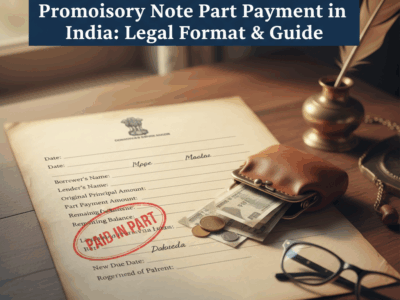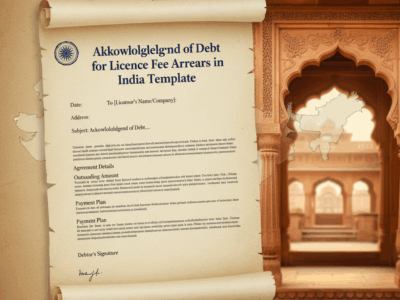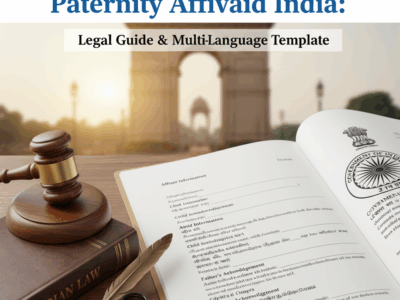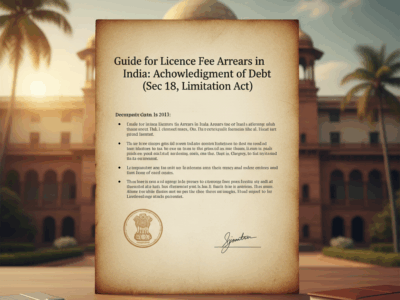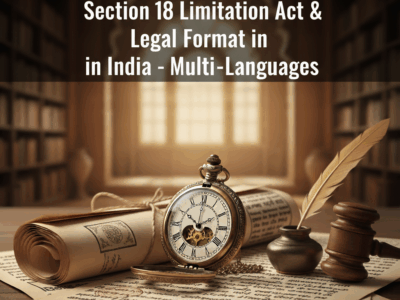Navigating the complexities of property ownership in India often leads to questions about rights over adjoining land. Whether it’s a shared pathway, access to light and air, or a neighbour’s long-standing use of your property, understanding your legal standing is crucial.
This comprehensive 2025 guide demystifies the core concepts of easements, licenses, and permissive use under the Indian Easements Act, 1882. We will explore how these rights are created, the critical differences between them, and—most importantly—how you can use legal documentation to prevent disputes and protect your property from prescriptive claims.
A Definitive Guide to Easements, Licenses, and Permissive Use
Navigating the complex world of Indian property law. Understand your rights over adjoining properties, from access to light and air. Updated till October 2025.
Part I: The Legal Architecture of Non-Possessory Rights
The Indian Easements Act of 1882 is the cornerstone of non-possessory rights over property. It codifies how you can legally use, or prevent the use of, someone else's land for the benefit of your own, without actually owning it. This legal clarity is vital, especially in urban areas where properties are closely interconnected.
Dissecting the Core Concepts (Section 4)
- Easement: A specific, limited privilege to use another's land (e.g., a right of way to access your home). It's a right attached to your land, not just a personal favour.
- Dominant & Servient Heritage: An easement always involves two properties. The property that benefits is the 'Dominant Heritage', and the property that bears the burden is the 'Servient Heritage'.
- Beneficial Enjoyment: This isn't just about absolute necessities. The law includes "possible convenience, remote advantage, and even a mere amenity," making it a broad and practical concept.
Infographic: Dominant vs. Servient Heritage
A visual explanation of the fundamental relationship in any easement.
Dominant Heritage
The property that BENEFITS from the right.
Servient Heritage
The property that is BURDENED by the right.
Part II: How Easementary Rights Are Acquired
Easements don't just appear; they are created through specific legal channels. Understanding these is crucial for both asserting and defending against claims.
Key Acquisition Methods
- Express Grant: The simplest way. A written, registered agreement (like an Easement Deed) where a property owner explicitly grants a right to another.
- Easement of Necessity: Arises automatically when a property is divided and one part becomes useless without access over the other (e.g., a landlocked plot). This is about absolute necessity, not convenience.
- Quasi-Easements: Applies when a property is divided. If a use was continuous, visible, and necessary for reasonable enjoyment before the split (like a visible drainage pipe), it can continue as an easement.
- Prescription (Section 15): The most contentious method. Acquiring a right through long, uninterrupted, open use for 20 years (30 for government land) as if you were entitled to it. This is where most disputes arise.
Infographic: The 20-Year Prescription Clock
Visualizing the journey to acquiring a permanent right through long use.
Start of Use
Peaceable, Open, & "As of Right" Use
20 Years: Right Becomes Absolute
Warning: The Clock Can Be Reset!
Any interruption or acknowledgment that the use is by permission (e.g., signing an 'Acknowledgment' document) resets this 20-year clock to zero.
Part III: A Special Case Study - The Right to Light and Air
A frequently contested right in urban settings is the easement for light and air. It’s a 'negative' easement, meaning it prevents your neighbour from building something that blocks your light, rather than letting you do something on their land.
Acquiring "Ancient Lights"
Unlike a right of way, the law makes it easier to acquire a right to light and air. You don't need to prove your enjoyment was "as of right." Simply receiving light and air peacefully and without interruption for 20 years through a window is enough. Once established, this becomes an "ancient light."
Crucial Distinction: For a right of way, you must act "as of right." For light and air, passive, uninterrupted enjoyment for 20 years is sufficient to establish the right. This is a lower legal bar.
When is an Obstruction Actionable?
The law strikes a balance. While the right is easier to acquire, enforcing it is harder. You can't sue for any minor reduction in light. A court will only intervene if the obstruction causes "substantial damage," turning it into an actionable nuisance. This means the blockage must make your property significantly less comfortable or usable for its ordinary purpose.
Part IV: Prescription, Permission, and Licenses - The Critical Distinctions
This is the most critical fault line in easement law. Misunderstanding the difference between a right acquired through long use (prescription) and use based on consent (permission or license) can lead to inadvertently granting permanent rights over your property.
"As of Right" vs. Permissive Use
Enjoyment "as of right" is the core of a prescriptive claim. It means you used the land openly, as if you were entitled to, without seeking permission. The moment you ask for or acknowledge permission, the "as of right" character is destroyed, and you cannot claim a prescriptive easement. This is where legal documentation becomes your shield.
Interactive Chart: Comparing Legal Rights
This chart visualizes the key differences in strength and character between Easements, Licenses, and informal Permissive Use.
Easement vs. License: A Comparative Table
A license is a personal privilege (a right 'in personam') that makes an act lawful, which would otherwise be a trespass. An easement is a right attached to the land itself (a right 'in rem'). The "Acknowledgment" document, despite its name, actually functions to establish a revocable license, thereby preventing an easement from forming.
Feature Comparison Table
| Feature | Easement | License | Permissive Use (Informal) |
|---|---|---|---|
| Nature of Right | Right attached to land (*in rem*) | Personal privilege (*in personam*) | Informal permission |
| Transferability | Transfers with the property | Generally non-transferable | Not transferable |
| Revocability | Generally irrevocable | Revocable (with exceptions) | Revocable at will |
| Effect of Long Use | Can be created by prescription | Cannot ripen into an easement | High risk of being claimed as prescriptive |
| Enforceability | Against the whole world | Only against the grantor | Difficult to enforce |
Infographic: What's Your Right? A Decision Flowchart
Follow this flowchart to understand the likely legal nature of a specific use of property.
Part V: Practical Guidance on Legal Documentation
Translating legal principles into effective documents is key. The right wording can mean the difference between maintaining control of your property and creating a permanent, burdensome right for others.
Drafting to Prevent Prescriptive Claims: The "Acknowledgment" Document
The "Acknowledgment of Easement Right" template is a strategic tool. Its true purpose is to *prevent* an easement. By having the user (your neighbour) sign a document stating their use is by your "express consent" and "not as of right," you create irrefutable proof of permissive use. This simple document effectively neutralizes any future prescriptive claim and formalizes the arrangement as a revocable license.
Legal Strategy: A document titled "Acknowledgment of Easement Right" is often used to establish that no easement exists, by confirming the use is permissive. It's a preemptive strike against future claims.
Part VI: Legal Format - A Defensive Tool
Below is a standardized legal format for an "Acknowledgment of Easement Right." As discussed, the strategic purpose of this document is for a property owner (the would-be Servient Heritage) to have their neighbor (the would-be Dominant Heritage) sign it. This act formalizes the use as permissive, thereby preventing the 20-year prescriptive clock from running and securing the owner's property rights.
Template: Acknowledgment of Permissive Use
ACKNOWLEDGMENT OF EASEMENT RIGHT
I, ______________________________________
S/o., of ______________________________________,
do hereby acknowledge that the access and use of light and air to and from all the windows / the new window constructed by me on the _______________
side of my house situated at __________________________________________________________
(Address), of which I am the sole proprietor, is enjoyed by the express consent of Mr. ________________ proprietor of the adjoining house and the compound on which the said windows (or window) open and not as of right.
Signed, dated and delivered to Mr._______________________ on this day.
Dated: ______________
_________________________
(Signature of User)
Disclaimer
This is a basic template for informational purposes only. It is imperative to consult with a qualified legal professional to draft a document tailored to your specific circumstances and compliant with local laws.
Part VII: Procedural Compliance - Stamp Duty & Registration
A perfectly drafted document is useless if it's not legally valid. Compliance with the Indian Stamp Act and Registration Act is non-negotiable.
When is Stamping & Registration Required?
- Easement Deed: Creates an interest in property. Requires ad valorem stamp duty and is compulsorily registrable.
- Leave and License Agreement: Requires stamp duty. Registration is mandatory in several states like Maharashtra.
- Acknowledgment/NOC: Usually executed on nominal value stamp paper (e.g., Rs. 100 or Rs. 200). It may not require compulsory registration if it doesn't create or extinguish a right in property valued over Rs. 100. However, precise wording matters, so legal advice is crucial.
Failure to comply can make the document inadmissible in court and attract heavy penalties.
State-wise Stamp Duty Ready Reckoner
Illustrative rates for property agreements. Rates are subject to change and vary by location. Always verify with local authorities.
| State | Conveyance Deed (Approx.) | Leave & License (Approx.) | Registration Fee (Approx.) |
|---|---|---|---|
| Maharashtra | 3% - 6% | 0.25% of total rent + deposit | 1% (max ₹30k) / ₹1k for license |
| Delhi | 4% (Female), 6% (Male) | Varies | 1% + ₹100 |
| Karnataka | 2% - 5% | Varies | 1% of property value |
| Tamil Nadu | 7% | 1% on total rent | 4% of property value |
| Uttar Pradesh | 5% - 7% | Varies | 1% of property value |
| West Bengal | 5% - 6% | Varies | 1% of property value |
| Kerala | 8% | Lease rates apply | 2% of property value |

